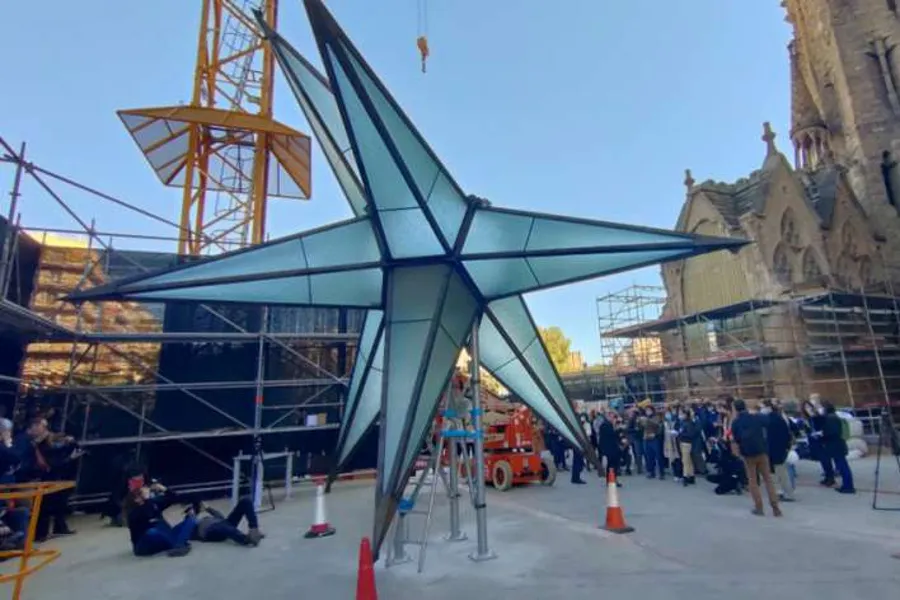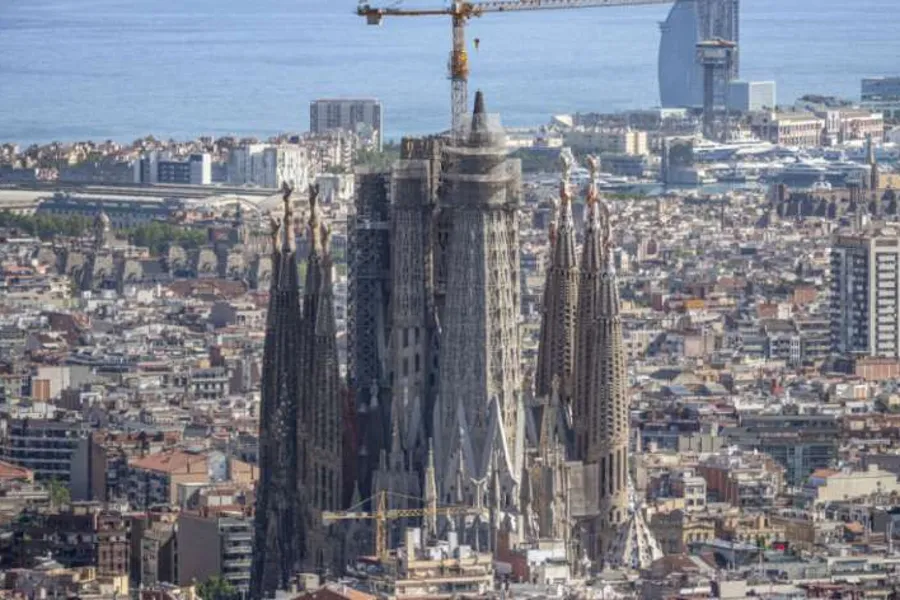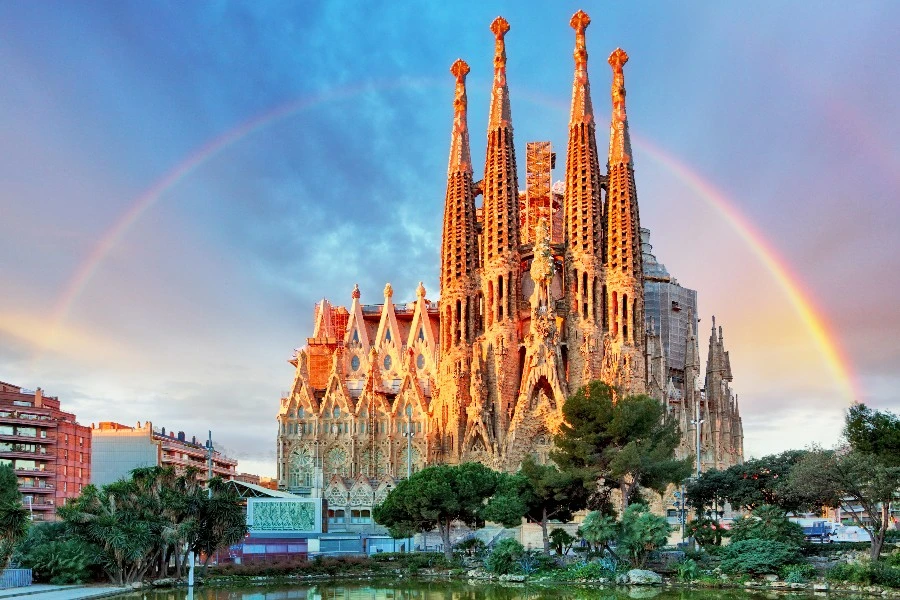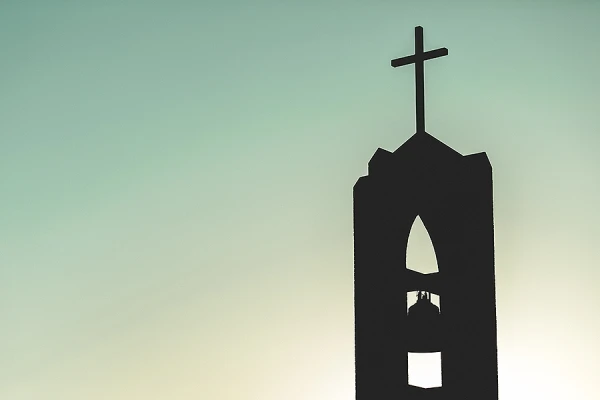
Barcelona, Spain, Nov 17, 2021 / 08:00 am (CNA).
The skyline of Barcelona will be transformed on Dec. 8, the Solemnity of the Immaculate Conception, when a newly completed tower at the Sagrada Família Basilica is illuminated.
A 12-pointed star atop the basilica’s soaring Tower of the Virgin Mary will be lit up at 7:40 p.m. local time.
🔵Programme of activities for the inauguration of the tower of the Virgin Mary now available
Check out all the events scheduled and how to take part on https://t.co/Pj9TCQ255g pic.twitter.com/3dy0mHYH0O— La Sagrada Família (@sagradafamilia) November 15, 2021
ACI Stampa, CNA’s Italian-language news partner, reported that the tower will be visible from across the city, which has a population of 1.6 million people and is the capital of the autonomous community of Catalonia in northeastern Spain.
The glass and steel star, which is lit up from within, is around 20 feet in diameter. Under the guidance of architect Jordi Faulí, a crane will lift the 5.5-ton star into place on Nov. 29.
The star will shine by day in the sunlight and will be illuminated at night. Its structure has been tested to resist lightning and shocks up to 100 kilograms (around 220 pounds).

The unfinished church, dedicated to the Holy Family, is expected to be completed in 2026, the centenary of the death of its visionary architect Antoni Gaudí.
The Sagrada Família was consecrated and proclaimed a minor basilica by Benedict XVI on Nov. 7, 2010.
The church was forced to close to tourists from March to July 2020 due to the coronavirus crisis. It invited medical workers to attend its reopening.

Xavier Martinez, the basilica’s general director, said that this October the church received only 40% of the number of visitors in October 2019, before the outbreak of the pandemic.
A video produced by the basilica shows that the Tower of the Virgin Mary stands next to the central Tower of Jesus Christ, which is surrounded by four smaller Towers of the Evangelists.
At 450 feet, the Marian tower will be the basilica’s second-highest after the Tower of Jesus Christ, which will reach around 570 feet.

The Tower of Mary will be the first of the six central towers to be completed.
Twelve wrought-iron stars that surround the tower’s crown were set in place on Nov. 9.
The lighting of the 800 windows that form the tower and the star will take place in three stages. On Dec. 4, the lower part will be lit up, followed by the upper part on Dec. 6, and finally the whole tower and star on Dec. 8.

The basilica’s website said: “The week before the lighting of the tower, Dec. 1-7, the Sagrada Família is inviting everyone to take part in illuminating the Tower of the Virgin Mary symbolically online, through the Sagrada Família and Archdiocese of Barcelona websites.”

“Anyone interested, regardless of the country they live in, can contribute their symbolic, digital flash of light, which will then translate into the progressive illumination of the tower in real life in the run-up to the lighting of the star.”
The full illumination will be preceded by a Mass, celebrated by Cardinal Joan Josep Omella i Omella of Barcelona, and the blessing of the tower.
The 75-year-old cardinal said that Barcelona’s skyline would be altered thanks to “a star of new evangelization, dedicated to Mary, whom we ask to intercede so that the Gospel illuminates our lives and our city.”
The basilica has unveiled an extensive program of activities to celebrate the tower’s completion.

Antoni Gaudí, a devout and ascetic figure, began working on the project for a church dedicated to the Holy Family in 1883. In 1914, he stopped all other works to focus exclusively on the basilica, to which he dedicated himself until his unexpected death.
He was struck by a tram in 1926, at the age of 73, while walking to Barcelona’s St. Philip Neri church for confession. Passersby did not recognize the famed architect because of his worn-out clothes and lack of identity papers.
He died three days after the accident and was buried in the crypt of his unfinished basilica. His cause for canonization opened in Rome in 2003.
The basilica finally received an official building permit in 2019, 137 years after its construction began.
Progress was initially slow as the works depended on private donations. Building work was interrupted by the Spanish Civil War, during which combatants set fire to the crypt and destroyed some of the architect’s designs and plaster models.

Gaudí created numerous celebrated works in Barcelona using his distinctive style inspired by natural forms and eschewing the sharp angles associated with modernist architecture.
He summed up his approach by saying, “The straight line belongs to men, the curved one to God.”
When questioned about how long it would take to build the basilica, he reputedly said, “My client is not in a hurry” — referring to God.
If you value the news and views Catholic World Report provides, please consider donating to support our efforts. Your contribution will help us continue to make CWR available to all readers worldwide for free, without a subscription. Thank you for your generosity!
Click here for more information on donating to CWR. Click here to sign up for our newsletter.






Leave a Reply